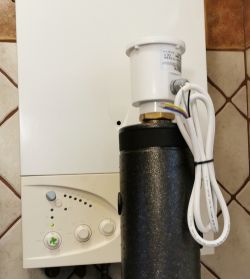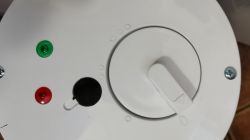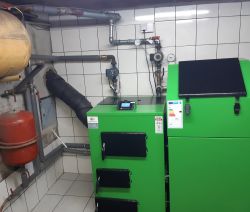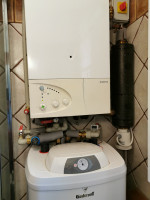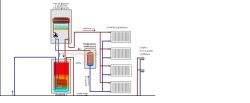All the arguments presented make very sense, but the idea of a 10kw installation is still on my mind. I have been living in my house for 20 years, I heated the first 10 with gas when five of them broke down, I decided to use a coal feed. It may be cheaper, but the quality of life is not comparable. I want to go back to gas heating. Now I use it for the stove and hot water in the summer. I use about 5500kwh (500m3) for this for PLN 1220 per year, if I heated domestic hot water in winter, my bills would be around PLN 1600. When I was heating with gas, I used an average of 10 m3 of gas per day, which is about PLN 600-700 per month today, which, multiplying for 6-7 months, it gives up to PLN 5,000, plus a stove and hot water for the remaining months and the bill can be up to 6,000. What can I do to get it reduce? Of course, improving the thermal insulation of the building. I plan to replace the woodwork, the cost of which is about PLN 25,000. When it will pay off - it's hard to count in 10-15 years. I cannot produce gas, so I have to replace it with electricity that I am able to generate. I will replace the gas stove with an electric one, and I am going to heat the domestic hot water with a heater mounted to the 200l tank, which I already have, it will probably come back soonest. For this purpose, I would need some 2KW plus 3KW, which I am using so far, it gives a photovoltaic installation with a power of 5KWp. My dilemma is that the idea was born in my head to set up a 10KW installation and what will be used to support the gas boiler by installing an electric heater on the return of the central heating installation. The panels will be mounted on the ground, the amount of space is not limited for me, the garden is large, if the gas price becomes very expensive, I can add enough to heat the house with an electric stove. I do not take heat pumps into account due to the lack of floor heating in the house, and the price for 30-40 thousand I can add panels and heat with an electric stove, I know that then the power plant will take 30 percent of the energy produced. There is one more issue, namely if I reduce gas consumption, it can fit into the W-2 gas tariff, where transmission fees are much lower. The second solution is not to install any heaters in the central heating installation, but to heat the house in the transitional months (October, March, April) with electricity obtained from the surplus of the photovoltaic installation, using infrared panels that can be hidden when not used for the rest of the year. I will definitely install an installation that will be enough for my current needs, plus hot water, i.e. about 5-6 kW, but I do not know if it is a good idea to heat the house with electricity from the surplus if I had 10kw installations. Maybe someone is already doing that? Thank you for all your help and interest in the topic.





